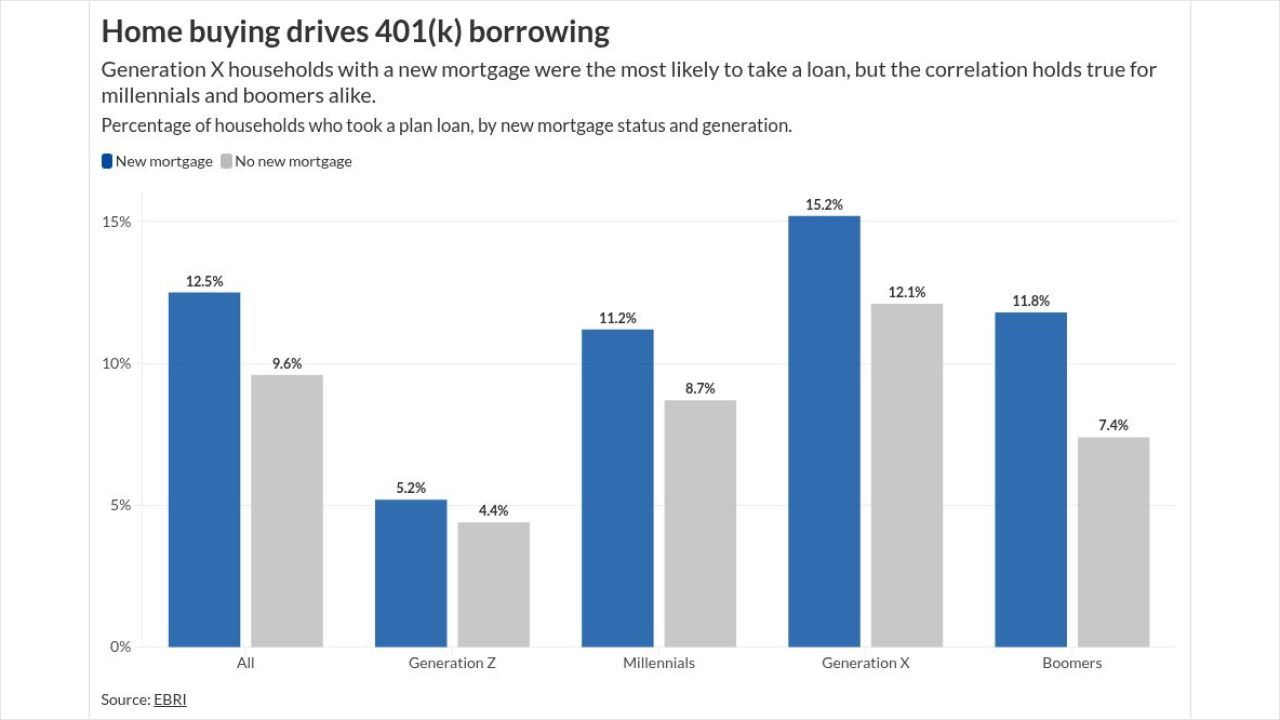If there's one thing the impending back-to-school season makes clear, it's that the cost of higher education in the U.S. is nerve-racking. The average tuition and fees for the 2021-22 school year are $10,338 at an in-state public college, $22,698 at an out-of-state and $38,185 at a private school, according to
Based on how much costs are increasing each year, though, millennials can expect to see far larger bills by the time their kids get to college. How does one possibly prepare for a child to go to university while also securing one's own financial future?
The most common answer is by using a 529 college savings plan. But for some families, I'd argue that the Roth IRA — yes, the retirement account — offers a more flexible way to build up your kid's higher education fund.
In a 529 plan, contributions grow tax-deferred and withdrawals are tax-free so long as they're put toward qualified educational expenses (including for K-12). Although there are no income restrictions and no annual contribution limits, there are lifetime contribution maximums. Family members can also contribute to a 529 plan that you set up for your child.
The issue with 529s is that they can be restrictive. And it's ultimately hard to predict your child's future.
Should they not attend college or another qualifying institution — such as a trade or technical school — and you withdraw the 529 funds for a non-educational expense, they will be subject to taxes and a potential 10% penalty. While there are options in case the original beneficiary isn't college-bound, you really have to be diligent about the eligibility rules when using the money. The plans also can
This is where the Roth IRA comes in. These are funded with post-tax dollars, so your future self, at 59 1/2 and older, can withdraw both contributions and earnings tax-free. Depending on current and predicted tax brackets, this can be a huge advantage, especially for younger people investing for retirement.
What many don't consider is that these accounts can also be leveraged to invest for non-retirement goals in a tax-advantaged way.
If you've had your Roth IRA for at least five years, you are eligible to withdraw contributions at any time without paying a penalty — and you can use these funds as you wish. (Note: This only applies to the post-tax contributions you made and not the earnings on those contributions. An early withdrawal of the latter can trigger a tax penalty.)
Millennials setting money aside for their children's college fund should consider the Roth IRA as one vehicle for doing so — but if, and only if, it is a supplemental retirement savings account. Meaning, you also have a 401(k) or another retirement fund that you're investing in for your own future. You do not want to tap your future nest egg to pay for schooling (there are loans for that).
Roth IRAs are subject to income phaseouts, which can make it more accessible to younger millennials and older Gen Zers who are not in their peak earning years yet. It also means paying taxes on income while you're in a lower tax bracket, which is probably less than what you'd pay in retirement.
Married parents with an adjusted gross income of $204,000 or less — and who file taxes jointly —
Maxing out just one Roth IRA with $6,000 annually, starting the year a child is born, would result in $108,000 of contributions by the time a child is 18 years old. Considering that each parent
The Roth IRA loophole allows you to withdraw these contributions at any time, after five years, without a tax penalty. The earnings on your contributions, meanwhile, can stay invested and grow for your use in retirement. If necessary, you may be able to withdraw earnings penalty-free for education expenses, but you'd still need to pay income tax if you're under 59 1/2. If you're over this age when your child goes to college, then you can withdraw both contributions and earnings without paying income tax or penalties.
Keep in mind that this does not equally apply to a Roth 401(k). Despite having a similar tax treatment as a Roth IRA, you do not have the same level of flexibility with contribution withdrawals.
There is also one big catch: A Roth IRA withdrawal will impact your child's financial aid options for school.
If your child will be heavily relying on federal student loans to pay for the majority of college tuition, then you should do the math on how much a retirement withdrawal will impact their access to loans. Another option is to wait until their junior or senior years before taking the withdrawals.
Whether you pick a 529, a Roth IRA or a mix to prepare for the cost of college, make sure you do not deprioritize your future needs in the process. You don't have to rob yourself of a comfortable retirement in the name of sending your child to school.








